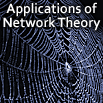Speaker
Dr
Renaud Lambiotte
(FUNDP)
Description
Many complex systems are organized in the form of a network
embedded in space. Important examples include the physical
Internet infrastucture, road networks, flight connections,
brain functional networks and social networks. The effect of
space on network topology has recently come under the
spotlight because of the emergence of pervasive technologies
based on geo-localization, which constantly fill databases
with people's movements and thus reveal their trajectories
and spatial behaviour. Extracting patterns andregularities
from the resulting massive amount of human mobility data
requires the development of appropriate tools for uncovering
information in spatially-embedded networks. In contrast with
most works that tend to apply standard network metrics to
any type of network, we argue in this paper for a careful
treatment of the constraints imposed by space on network
topology. In particular, we focus on the problem of
community detection and propose a modularity function
adapted to spatial networks. We show that it is possible to
factor out the effect of space in order to reveal more
clearly hidden structural similarities between the nodes.
Methods are tested on a large mobile phone network and
computer-generated benchmarks where the effect of space has
been incorporated.

